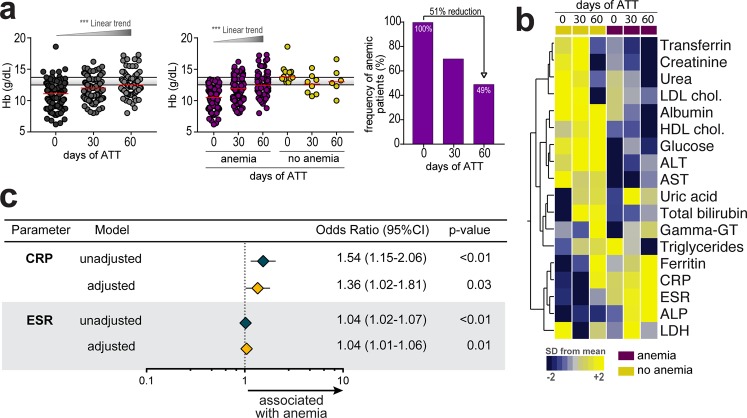Figure 4.
Pulmonary TB patients with anemia persist with systemic inflammatory profile after 60 days of antitubercular treatment initiation. (a) Hemoglobin levels at different time points of antitubercular therapy in the entire population as well as in the groups of patients with or without anemia at day 0 of treatment are shown. Data were compared using the Kruskal-Wallis test with Dunn’s multiple comparisons or linear trend post hoc tests. Right panel shows frequency of anemia after initiation of antitubercular therapy in patients with anemia at the study enrollment (day 0 of treatment). ***p < 0.001. Yellow plots represent non-anemic TB patients, purple plots represent anemic TB patients. (b) Log10-transformed mean values of the biochemical parameters measured at the different study timepoints were calculated per group of patients according to anemia status at each timepoint. Hierarchical cluster analysis of z-score normalized values illustrates the status of inflammatory profile of TB patients during ATT between those who had anemia or not. (c) Logistic linear regression model adjusted to significant biochemical parameters in Supplementary Table 1 (p < 0.2) was used to test independent associations between biochemical parameters measured at pre-ATT and presence of anemia at day 60 of therapy (OR, Odds ratio; 95%CI, 95% confidence interval). Only parameters which remained with p < 0.05 in the adjusted model are shown. Data represent OR per 1Log10 increase in values of the parameters.

